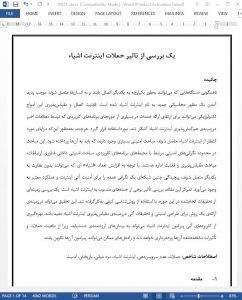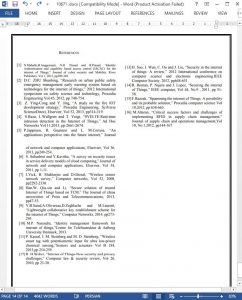Abstract
The heterogeneity of devices that can seamlessly connect to each other and be attached to human beings has given birth to a new computing epitome referred to as the Internet of Things. The connectivity and scalability of such technological waves could be harnessed to improve service delivery in many application areas as revealed by recent studies on the Internet of Things' interoperability. However, for the envisaged benefits to be yielded from Internet of Things there are many security issues to be addressed, which range from application environments security concerns, connection technology inbuilt security issues, scalability and manageability issues. Given the increasing number of objects or “things” that can connect to each other unsupervised, the complexity of such a network is presenting a great concern both for the future internet's security and reliable operation. The focus of this paper was to review the impact of some of the attacks attributable to internet of things. A desktop review of work done under this area, using the qualitative methodology was employed. This research may contribute towards a roadmap for security design and future research on internet of things scalability. The deployment of future applications around Internet of Things may receive valuable insight as the nature of attacks and their perceived impacts will be unveiled and possible solutions could be developed around them.
I. INTRODUCTION
One of the evolving technologies is the Internet of Things (IoT). Despite the various definitions available, the common understanding on IoT revolves around the interconnection capabilities among things, objects and people. As supported by [1] that we are moving towards internet of things as device to device communication takes the toll of connectivity to date. Such a heterogeneous network environment is enabled by various connection technologies and protocols available such as RFID, WIFI and Wireless Sensor Networks [1].
VIII. CONCLUSION
The heterogeneous nature of IoT demands a versatile and unique legal framework that can broadly tackle globality, verticality, ubiquity and ethnicity of the IoT [12]. In considering security of typical IoT enabled devices and objects the interaction of such objects is not limited among the homogenous interactions, which they can create, but the various modalities that can be possible both horizontally and vertically. As a result of this approach, it can be anticipated that, a holistic approach to security challenges that could be identified for IoT could be uniquely extended to different classes of IoT implementations. A one size fits all strategy will not yield results.










